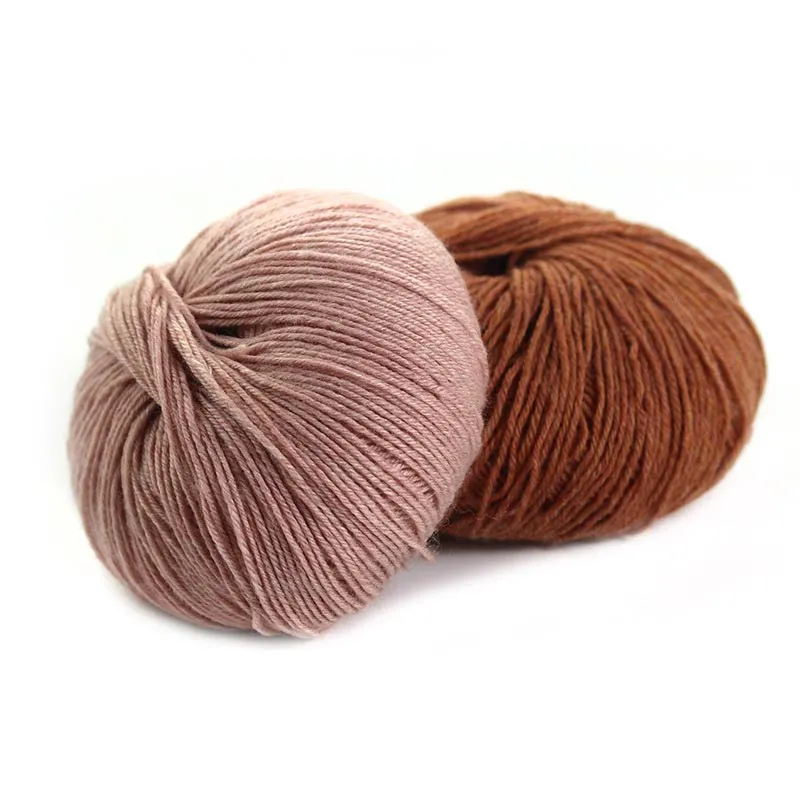The Versatility and Beauty of Wool Knitting Yarn: A Comprehensive Guide
2024-09-13
Wool knitting yarn has long been cherished by knitters and crafters around the world for its warmth, durability, and versatility. Whether you're a seasoned knitter or a beginner, understanding the various aspects of wool yarn can greatly enhance your crafting experience. In this blog, we'll explore the benefits of wool knitting yarn, its different types, and how to choose the best yarn for your projects.
What is Wool Knitting Yarn?
Wool knitting yarn is made from the fleece of sheep and other animals, such as alpacas and rabbits. It is known for its natural insulating properties, making it an excellent choice for garments and accessories that need to provide warmth and comfort. Wool yarn is available in a range of textures, colors, and weights, each offering unique qualities and applications in knitting and crochet projects.
Benefits of Wool Knitting Yarn
1. Warmth and Insulation: Wool is a natural insulator, which means it retains heat effectively. This makes wool yarn ideal for creating cozy sweaters, scarves, and blankets that keep you warm in colder weather.
2. Breathability: Despite its insulating properties, wool is also breathable. It helps regulate body temperature by wicking moisture away from the skin, keeping you comfortable in a variety of conditions.
3. Elasticity: Wool fibers have natural elasticity, allowing them to stretch and return to their original shape. This elasticity makes wool yarn perfect for garments that need to maintain their shape and fit.
4. Durability: Wool is known for its durability and resilience. It can withstand regular wear and tear, making it a great choice for items that will be used frequently.
5. Softness: High-quality wool yarn is soft and gentle against the skin. It provides a luxurious feel, especially when used for items like shawls and baby garments.
6. Natural Sheen: Wool yarn often has a natural sheen that adds a beautiful luster to finished projects. This shine enhances the overall appearance of knitted or crocheted items.
Types of Wool Knitting Yarn
1. Merino Wool: Merino wool is one of the softest and most luxurious types of wool. It comes from Merino sheep and is known for its fine, soft fibers. Merino wool yarn is excellent for garments worn close to the skin, such as sweaters and socks.
2. Alpaca Wool: Alpaca wool is softer than traditional sheep's wool and has a silky texture. It is hypoallergenic and less likely to cause irritation, making it suitable for sensitive skin. Alpaca yarn is also known for its warmth and lightweight properties.
3. Sheep's Wool: This is the most common type of wool yarn and includes various breeds such as Shetland, Yorkshire, and Suffolk. Sheep's wool yarn varies in texture and thickness, offering a range of options for different projects.
4. Lambswool: Lambswool is made from the first shearing of a lamb, making it incredibly soft and smooth. It is often used for delicate and high-quality projects.
5. Wool Blends: Wool yarn can be blended with other fibers, such as acrylic or cotton, to enhance its properties. Blends can offer additional softness, durability, and ease of care.
How to Choose the Right Wool Knitting Yarn
1. Project Type: Consider the type of project you’re working on. For garments like sweaters and socks, opt for soft and durable yarns like Merino or alpaca. For accessories and home decor items, you might choose a wool blend or a sturdier wool type.
2. Weight and Thickness: Wool yarn comes in various weights, from lace to bulky. Choose the weight that matches your pattern requirements and desired finished result.
3. Color and Texture: Wool yarn is available in a wide range of colors and textures. Select colors that complement your design and textures that provide the desired feel and appearance.
4. Care Instructions: Different types of wool yarn have varying care requirements. Some yarns are machine washable, while others may require hand washing or special care. Check the care instructions to ensure the yarn suits your needs.
5. Allergies and Sensitivities: If you have sensitive skin or allergies, consider hypoallergenic options like alpaca wool or wool blends designed for sensitive skin.
Tips for Working with Wool Knitting Yarn
1. Swatch First: Always knit a swatch before starting your project to check for gauge and ensure the yarn behaves as expected.
2. Store Properly: Keep wool yarn in a cool, dry place away from direct sunlight and moisture. Store it in a breathable bag or container to prevent damage.
3. Test for Allergies: If you’re new to wool yarn, do a small test to ensure you don’t have any allergic reactions or sensitivities.
4. Follow Care Instructions: Adhere to the care instructions provided with your yarn to maintain its quality and longevity.
Conclusion
Wool knitting yarn is a versatile and treasured material in the world of knitting and crochet. Its natural properties, including warmth, elasticity, and softness, make it an excellent choice for a wide range of projects. By understanding the different types of wool yarn and how to choose the right one for your needs, you can create beautiful and lasting garments and accessories. Whether you’re making a cozy sweater or a delicate shawl, wool yarn offers a timeless quality that enhances every project.



